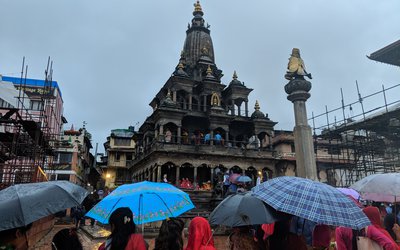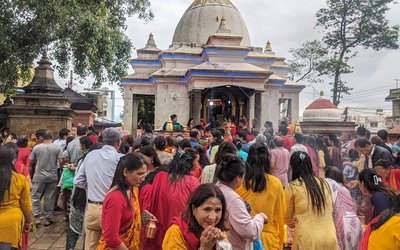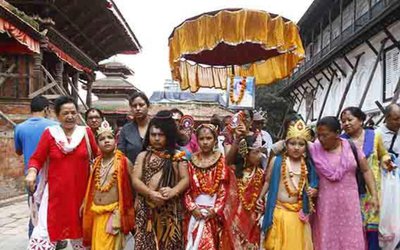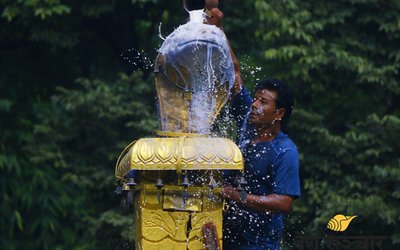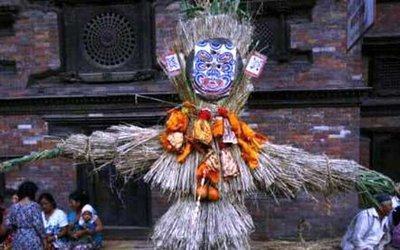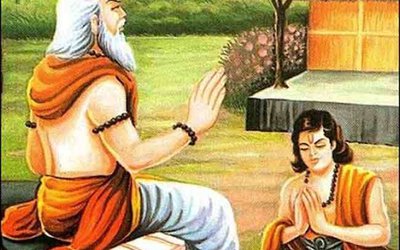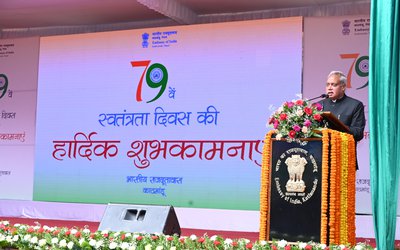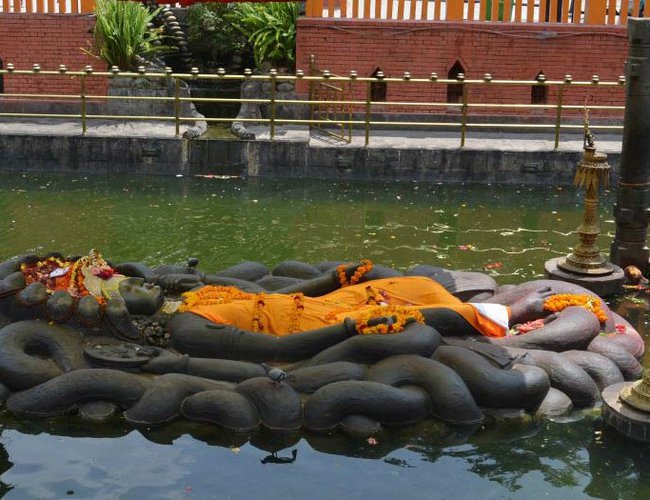
Every year on the day of Ashadh Shukla Ekadashi, the Tulsi (holy basil) plant is transplanted in homes, marking the beginning of a four-month period of special worship and devotion.
Today is also Harishayani Ekadashi, Hindus plant Tulasi/basil (Ocimum tenuiflorum) on their yards, which they worship as a form of Lord Vishnu for next four months till the day of Haribodhini Ekadashi, the concluding day of the Chaturmas.
On this day, the seedling of the dal plant that was placed in the Tulsi planter (moṭh) on Jyeshtha Shukla Ekadashi a month earlier is now transplanted into the Tulsi planter. According to the Sanatan Vedic tradition, Tulsi is regarded as a symbol of Lord Vishnu. From today until Kartik Shukla Ekadashi, special worship is offered at the Tulsi planter.
According to Professor Dr. Devmani Bhattarai, a scholar of religious scriptures and a member of the Nepal Panchang Decision Development Committee, this day is known as Hari Shayani Ekadashi, because from Ashadh Shukla Ekadashi to Kartik Shukla Ekadashi (a period of four months), it is believed that Lord Vishnu goes into a cosmic slumber in the Ksheer Sagar (Ocean of Milk). This four-month period is also known as Chaturmasa.
There are 24 Ekadashis in a year. Those who are able observe fasts on all Ekadashis by consuming only fruits. Those who cannot do so usually fast on the eight Ekadashis that fall within Chaturmasa. People who are active in work and unable to fast for four months generally observe fasts only on Hari Shayani Ekadashi and Hari Bodhini Ekadashi, consuming only fruits on these two days.
On the occasion of Hari Shayani Ekadashi, from early morning, large crowds of devotees gather at Budhanilkantha in Kathmandu, the four Narayans of the valley, and at Vishnu temples across the country. On Ekadashi, people usually refrain from eating rice-based dishes and instead consume fruits, flatbreads (roti), or traditional thick porridge (dhido).
From a scientific perspective, Tulsi is also considered medicinal and is proven to produce a high amount of oxygen. It is believed that areas with Tulsi plants do not attract harmful disease-spreading germs. There is also a belief that placing a Tulsi planter in places with negative architectural energies (Vastu dosh) brings positive results. Scientifically, it has been confirmed that areas with Tulsi plants have cleaner air.
According to Vedic tradition, after four months of ritual worship, the Tulsi plant is ceremonially married to Lord Damodar (a form of Vishnu) on Kartik Shukla Ekadashi, which is also known as Hari Bodhini Ekadashi. After the proper wedding ceremony, a fire ritual (havan) is conducted to mark the completion (udyapan) of the Chaturmasa fast.
Hari Sayani Yekadashi
Hari Sayani or Devshayani Ekadashi is considered to be one of most auspicious Ekadashi among others. Devshayani Ekadashi is also known as Shayani Ekadashi. Ekadashi falls twice in a month, one is observed during Shukla Paksha and another is observed during Krishna Paksha. Devshayani Ekadashi is going to be observed on Eleventh day during Shukla Paksha in the month of Ashadha. This month, it will be celebrated on June 29 this year.
The Chaturmas, a period from the 11th day of waxing moon of the month of Ashadh (Ashadh Shukla Ekadashi) to the 11th day of waxing moon of the month of Kartik (Kartik Shukla Ekadashi) is considered a holy period for the worship of Lord Vishnu.
Popularly, the two Ekadashis are also called Thuli (Great) Ekadashis. Observing the Chaturmas Brata or fasting is regarded as very auspicious, which should be done after planting the saplings of Tulasi on Ekadhashi.
Eadashis are the days dedicated to Lord Vishnu. Hari Sayani Ekadashi over here is also one among them. Hari Sayani, by words, means the sleeping Hari (Lord Vishnu). It is said that on this day, Lord Vishnu goes to deep sleep for four months in Sheersagar. And that period of time is well known as the Chaturmas (the period of four months).
During these four months, people do not do mangal religious acts such as wedding, initiation of the construction of a new house as it is believed that the god himself is asleep and couldn’t give his blessings.
It has several more names like Shayani Ekadashi, Maha Ekadashi, Prathama Ekadashi (first Ekadashi), Padma Ekadashi, Devshayani Ekadashi, Devpodhi Ekadashi.
People on this day, as expected visit Narayansthan (the temples of Lord Vishnu), worship Lord Vishnu along with Goddess Laxmi and plant Tulsi, a herbal medicinal plant. Tulsi plant has also its own significance both religiously and medically.
Hindus across Nepal are celebrating the Harishayani Ekadashi festival, the first day of the four-month holy period of Chaturmas with fasting and worship and prayer to Lord Vishnu.
On the day of Harishayani Ekadashi, Hindus plant Tulasi/basil (Ocimum tenuiflorum) on their yards, which they worship as a form of Lord Vishnu for next four months till the day of Haribodhini Ekadashi, the concluding day of the Chaturmas.
The Chaturmas, a period from the 11th day of waxing moon of the month of Ashadh (Ashadh Shukla Ekadashi) to the 11th day of waxing moon of the month of Kartik (Kartik Shukla Ekadashi) is considered a holy period for the worship of Lord Vishnu.
Popularly, the two Ekadashis are also called Thuli (Great) Ekadashis. Observing the Chaturmas Brata or fasting is regarded as very auspicious, which should be done after planting the saplings of Tulasi on Ekadhashi.
The holy plant Tulsi is regarded as the plant to give the oxygen all the time with its religious, medicinal importance in Nepal
Tulsi or Tulasi (Ocimum tenuiflorum) or Holy Basil is a sacred plant in Hindu belief. Hindus regard it as an earthly manifestation of the goddess Tulsi; she is regarded as a great worshipper of the god Vishnu. The offering of its leaves is mandatory in ritualistic worship of Vishnu and his forms like Krishna and Vithoba.
Many Hindus have tulsi plants growing in front of or near their home, often in special pots or a special masonry structure known as Tulsi Vrindavan as this is related to their culture. Traditionally, Tulsi is planted in the center of the central courtyard of Hindu houses. The plant is cultivated for religious and medicinal purposes, and for its essential oil. It has many health benefits as well.
- Krishna Janmashtami 2025: Janmashtami And Importance
- Aug 16, 2025
- Trump, Putin wrap up 'productive' Alaska summit
- Aug 16, 2025
- Weather Forecast: Modereate Rain Is Likely To Occur In Koshi, Madhesh And Sudurpashicm Provinces
- Aug 16, 2025
- Kulman Ghising Meets British MP
- Aug 15, 2025
- Embassy of India In Kathmandu celebrated the 79th Independence Day of India.
- Aug 15, 2025
